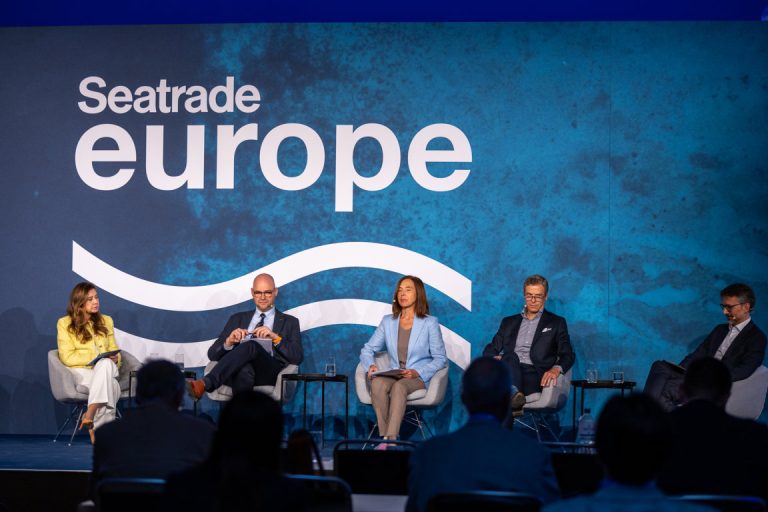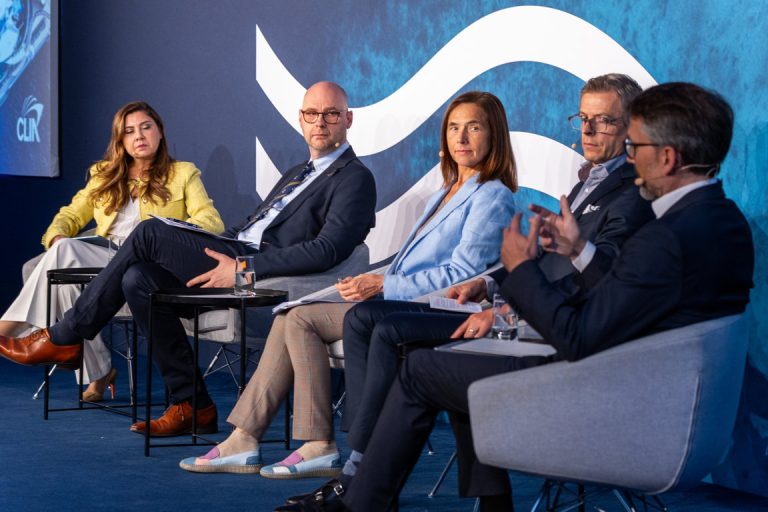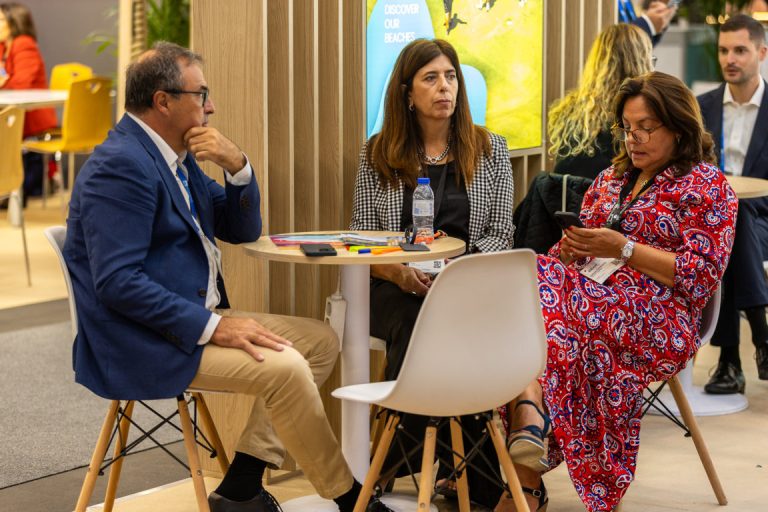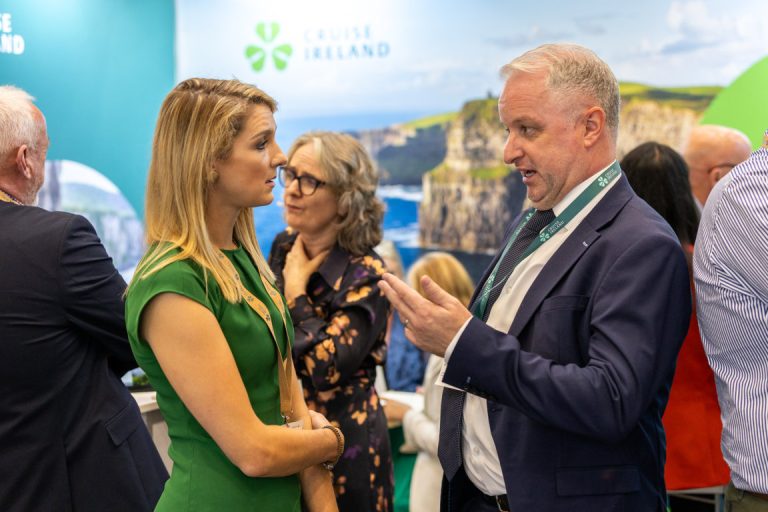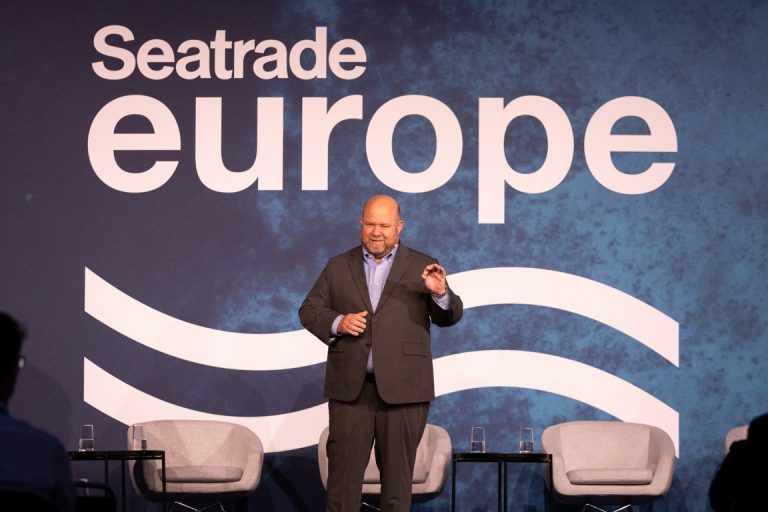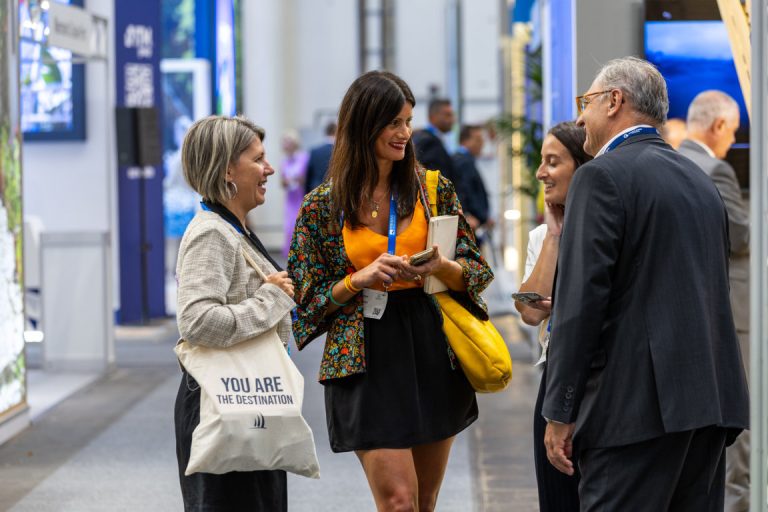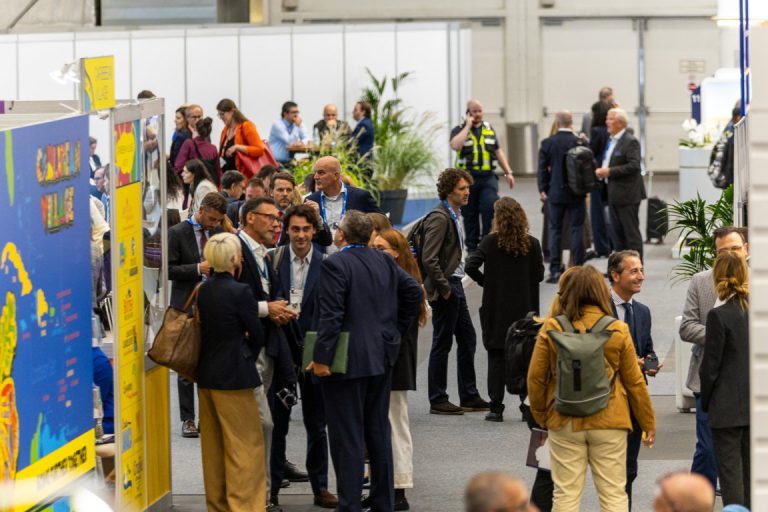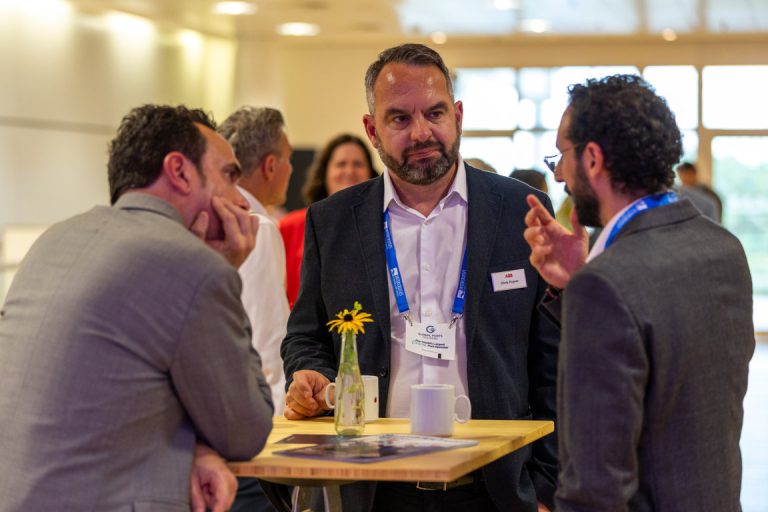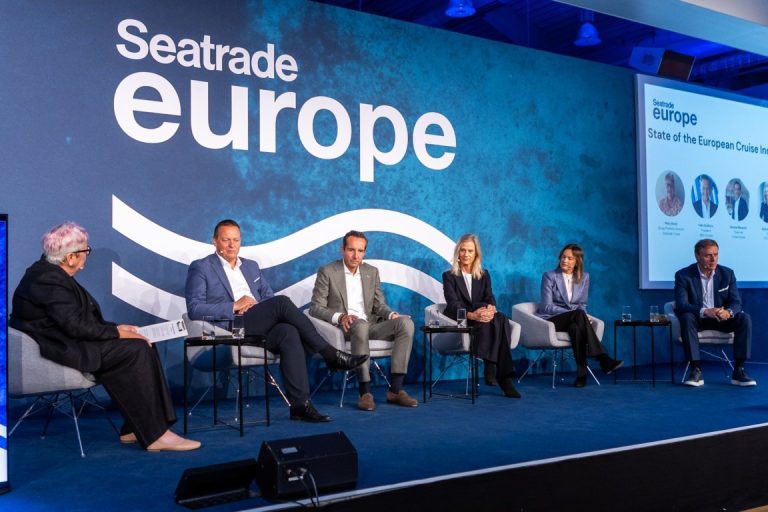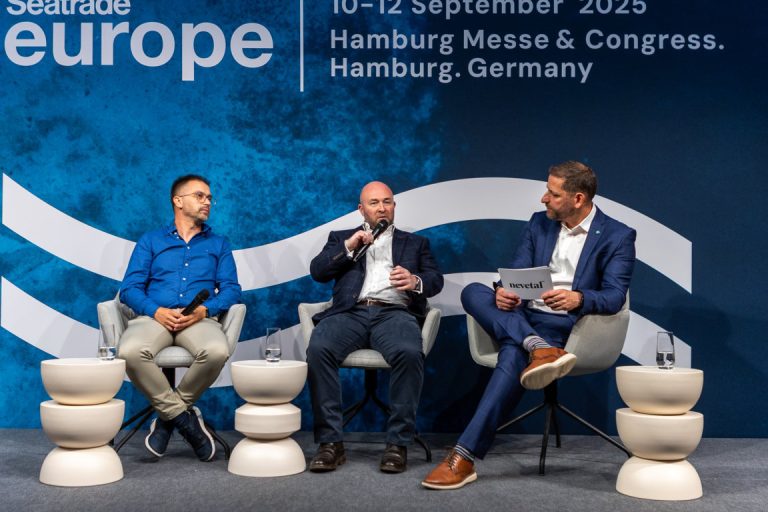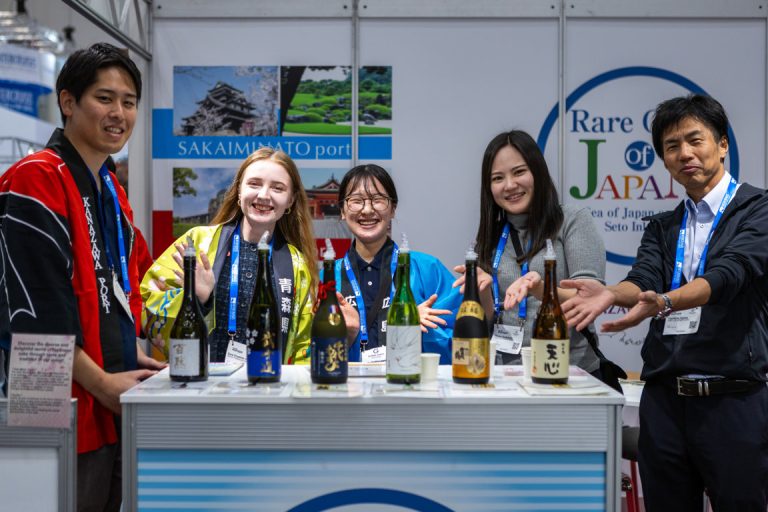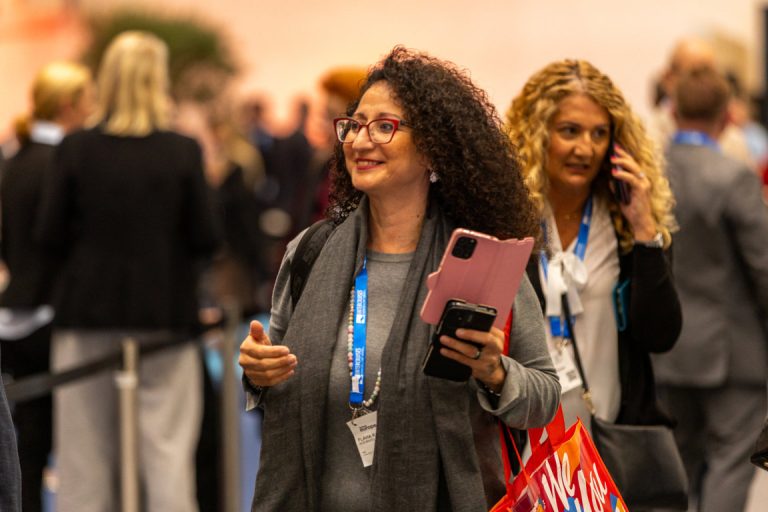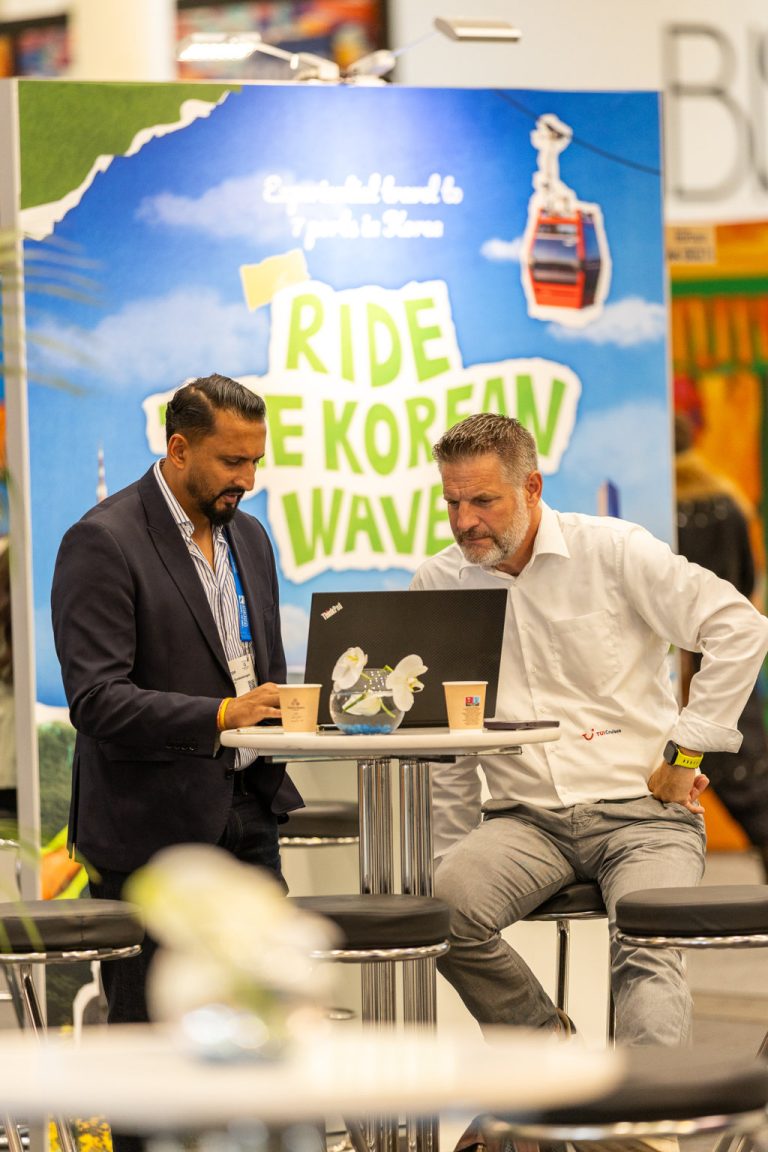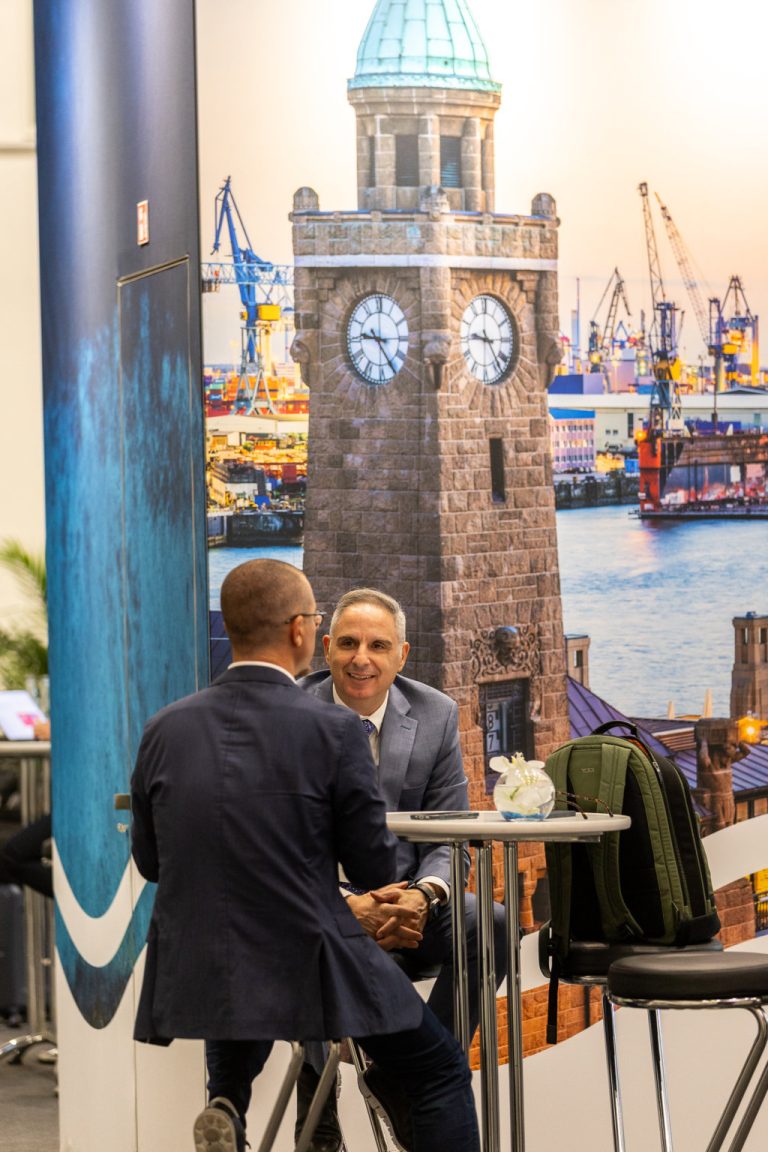Seatrade Europe 2025: Innovation and New Horizons
In a global landscape marked by environmental transitions, regulatory changes, and new traveler expectations, Seatrade Europe 2025 reaffirmed itself as the leading event for the entire European — and global — cruise community.
Held in Hamburg from September 10 to 12, 2025, under the theme “Future Forward,” the summit brought together over 140 speakers and numerous sessions focused on strategic, technological, and operational innovation.
ST-Hamburg
ST-Hamburg
From the giants of ocean cruising to river cruise leaders, from tech innovators to institutions, everyone at Seatrade Europe 2025 came together to discuss how to transform cruising into a driver of sustainable, intelligent, and inclusive growth. With a rich and multidimensional agenda, the event provided a comprehensive overview of the priorities, challenges, and opportunities that will shape the future of the cruise industry.
The conference opened with a keynote by Charles Bud Darr, President and CEO of CLIA, who clearly outlined the strategic priorities of the global and European cruise sectors. His address emphasized the need for a unified vision, balancing the industry’s economic goals with growing environmental and regulatory expectations.
Following this, the “State of the European Cruise Industry: Future Forward” panel explored strategies to enhance the competitiveness, resilience, and relevance of cruising in a Europe increasingly focused on climate neutrality and environmental policy evolution. Key topics included fleet decarbonization, digital transformation, shipbuilding innovation, port infrastructure development, and new employment strategies.
A major session focused on the European Maritime Industrial Strategy, highlighting the synergies between public policy and private innovation to strengthen Europe’s leadership in shipbuilding and sustainable technologies. Discussions on regulatory initiatives like FuelEU Maritime and ETS, as well as upcoming frameworks such as the Clean Industrial Deal and Sustainable Transport Investment Plan, reaffirmed Europe’s goal to make the cruise industry not only greener but also more autonomous and globally competitive.
ST-Hamburg (7)
ST-Hamburg (8)
A significant part of the program was dedicated to the world of river cruises — a segment that is rapidly expanding and becoming increasingly sophisticated. From the introductory session to the panel “State of the River Cruise Industry,” the image emerged of a mature sector still rich in potential, facing challenges such as expansion into lesser-known rivers, growing infrastructure needs, and the accelerated adoption of sustainable practices.
Among the most cross-cutting and strategic topics discussed during Seatrade Europe 2025, environmental sustainability took center stage, reaffirming itself as the true driving force of change within the cruise industry. Various panels and thematic sessions explored the need to transform ecological ambitions into concrete, swift, and measurable actions. Particularly significant was the reflection on how the cruise system can contribute to building sustainable maritime ecosystems by integrating the decarbonization process with a holistic vision of the interaction between energy, oceans, and port operations. In this perspective, port infrastructures were presented not merely as logistical transit points, but as strategic hubs for the energy transition — called upon to play an active role in spreading green technologies and managing resources efficiently.
Ample attention was also given to the topic of retrofitting existing vessels, with the goal of significantly reducing emissions through the adoption of advanced technologies. The modernization of fleets represents a crucial step toward achieving the 2030 climate targets, especially for a sector that still operates a large percentage of ships powered by traditional fuels. At the same time, discussions focused on designing the ships of the future: vessels built from the outset according to principles of energy flexibility, ready to accommodate multiple propulsion solutions — from LNG to batteries and hydrogen — and equipped with digital systems for intelligent energy management.
ST-Hamburg (6)
ST-Hamburg (15)
Sustainability, however, does not stop at the energy transition. The conservation of marine biodiversity has emerged as a growing priority, and numerous companies shared initiatives aimed at actively protecting ecosystems by adopting new operational practices, supporting scientific programs, and revising their routes to reduce environmental impact in the most fragile seas.
In this context, shore power is seen as one of the most urgent and useful short-term solutions. When ships connect to the port’s electrical grid while docked, they can switch off their engines, significantly reducing pollutant emissions. This helps improve air quality in cities close to ports. During the event, many speakers emphasized the importance of accelerating the deployment of this technology. However, several obstacles still need to be overcome — such as high infrastructure costs, the lack of standardized systems, and challenges related to electricity availability. Alongside shore power, other solutions were also discussed: biofuels, hybrid engines, and hydrogen modules. All these options will be essential to building a decarbonization strategy that is flexible, gradual, and tailored to the varying needs of cruise lines, ports, and suppliers.
The concept of the “smart port” has now become an indispensable reality. The session dedicated to technological innovation in ports demonstrated how artificial intelligence, biometric systems, and digitalized passenger flows are revolutionizing both the passenger experience and operational efficiency. The challenges posed by the new EU Entry/Exit System (EES) and ETIAS requirements were addressed with innovative approaches such as self-service kiosks, integrated apps, and interoperability between systems.
ST-Hamburg (20)
ST-Hamburg (19)
Shore experiences represented a crucial focus of the debate at Seatrade Europe 2025, confirming their strategic importance in the evolution of the cruise industry’s offerings. Several sessions highlighted how guest satisfaction depends not only on the quality of the onboard experience but also on the perceived value of activities offered in the ports of call. The quality of the welcome, the consistency of the experience with guests’ expectations, and the degree of cultural engagement have now become fundamental parameters in shaping the overall customer experience.
In particular, the importance of training local staff emerged as a decisive lever for improving interaction between cruise passengers and host communities. Investing in skill development on shore means ensuring not only a higher level of service but also a more authentic form of hospitality — one that truly reflects the identity of the destination. This focus on human capital is closely linked to a broader vision of responsible tourism, in which destinations are not merely places to visit but active participants in the travel experience.
Another increasingly relevant aspect concerns the role of social media and online reviews in shaping the image of destinations. The digital storytelling created by passengers directly influences the future choices of other travelers, as well as the overall reputation of a port or location. In an era where user-generated content often has a greater impact than any advertising campaign, the onshore experience acquires a powerful communicative value.
Within this context, the sessions dedicated to the luxury and expedition segments — such as “Luxury Living at Sea” and “Expedition Experiences” — revealed a clear trend toward more exclusive and culturally enriched travel. The most discerning guests are demanding longer stays in port, meaningful interactions with local communities, and tailor-made activities designed to deliver a sense of authenticity that cannot be replicated elsewhere.
ST-Hamburg (1)
ST-Hamburg (23)
Finally, an interesting and innovative topic was raised: the role of onboard staff as true ambassadors of the destinations. As key points of reference for passengers, crew members can influence how destinations are perceived by offering recommendations, sharing personal experiences, and conveying values tied to cultural and environmental respect. This new approach enhances the human potential of the crew, transforming them into a bridge between ship and shore, between the cruise experience and the local community.
The luxury segment continues to gain momentum in Europe, driven by growing demand for personalized itineraries, smaller ships, and a highly curated onboard experience. In this context, a completely new focus emerged on residential ships, where extended stays in port redefine the relationship with destinations. This new form of long-term tourism calls for deeper models of urban engagement, personalized services, and ongoing dialogue between ship and city.
Another central theme that emerged during Seatrade Europe 2025 was the impact of demographic transformation on the cruise industry. The composition of the target audience is changing profoundly, with the growing presence of younger generations and the rise of more fluid, inclusive, and intergenerational travel models. This evolution is pushing cruise lines to radically rethink how they design both onboard and onshore experiences.
Today’s new travelers are not simply seeking a vacation, but an experience that reflects their values and fits their lifestyle. Authenticity has become a key word: every element of the journey — from food to entertainment, from excursions to communication — must feel genuine, credible, and connected to the local context. Flexibility is another essential requirement: new generations tend to build personalized itineraries, blending work and leisure, traveling solo, with friends, or across multiple generations of the same family.
In response to this new demand, cruise lines are adopting increasingly sophisticated adaptation strategies. In terms of spatial design, there is an ongoing evolution toward modular and customizable cabin layouts. Accommodations must cater both to multigenerational families and solo travelers, offering different functionalities depending on their needs. Pricing models are following a similar logic, becoming more dynamic and segmented, in order to provide tailor-made options that reflect guests’ budgets and the type of experience they seek.
ST-Hamburg (22)
ST-Hamburg (2)
The planning of onboard activities is also evolving, focusing on greater variety and more inclusive accessibility. Experiences need to appeal to diverse audiences—not only in terms of age but also cultural background, orientation, language, and personal interests. Inclusivity is no longer an optional choice but a necessary condition to ensure relevance and competitiveness in a global market increasingly attentive to representation and respect for diversity.
Wellness, understood in a holistic sense, is emerging as another fundamental component of the new cruise experience. It’s not just about spas and physical activities, but also spaces for mental relaxation, mindfulness programs, healthy food, and environments designed to foster a sense of balance and rejuvenation. In this context, sustainability intertwines with wellness and social responsibility, becoming an integral part of the value proposition perceived by passengers.
Seatrade Europe 2025 also highlighted new growth and development scenarios, expanding its focus toward emerging markets and international dynamics. In particular, the Middle East, India, and the Asia-Pacific regions have established themselves as key players in an increasingly global narrative about the future of cruising. The Middle East is investing heavily in ports and aims to become a leading destination for winter cruises, offering luxury itineraries that combine culture, relaxation, and unique landscapes. The goal is to become a stable and sustainable cruise hub—not just an exotic stopover. India is also growing in the sector, thanks to the government project “Cruise Bharat,” which aims to improve ports, simplify controls, and attract more tourists, both domestic and international. Success will depend on collaboration between government and private companies.
In the Asia-Pacific region, the situation is varied: Australia continues to grow thanks to its domestic market; countries like Japan and Southeast Asia are recovering post-pandemic; New Zealand, however, is experiencing a decline in arrivals due to new regulations and increased environmental focus.
These insights also led to practical discussions on how to develop new ports in still largely unexplored areas. Building new terminals is not seen merely as a technical task but as an opportunity to integrate important aspects from the start, such as sustainability, respect for local culture, and community involvement. It is clear that the success of a new destination depends not only on its capacity to accommodate large ships but also on the quality of the onshore experience, the story the place tells, and the values shared throughout the journey.
ST-Hamburg (10)
ST-Hamburg (11)
Another central theme that emerged at the conference was work in the cruise industry, which is currently undergoing significant changes. The increasingly complex industry needs people with modern skills, especially in digital, environmental, and cultural fields. It is therefore necessary to update training programs, improve recruitment on a global scale, and enhance the well-being of workers onboard. Providing a safe, inclusive, and stimulating work environment is essential, particularly to attract young people, for whom cruising can represent a real career opportunity. Making the sector more appealing from a professional standpoint is now a priority to ensure its future growth.
Seatrade Europe 2025 showed that the cruise world is no longer just a part of tourism but a true space for innovation and change. Ships are becoming increasingly modern, ports are transforming, passenger experiences are being renewed, and destinations are expanding to new areas of the world. All of this sends a clear message: the future of cruising will be driven by sustainability, intelligence, and the desire to improve.
Don’t miss news, updates, and reviews about the cruise world on Cruising Journal, featuring photos, videos, and cruise deals.

